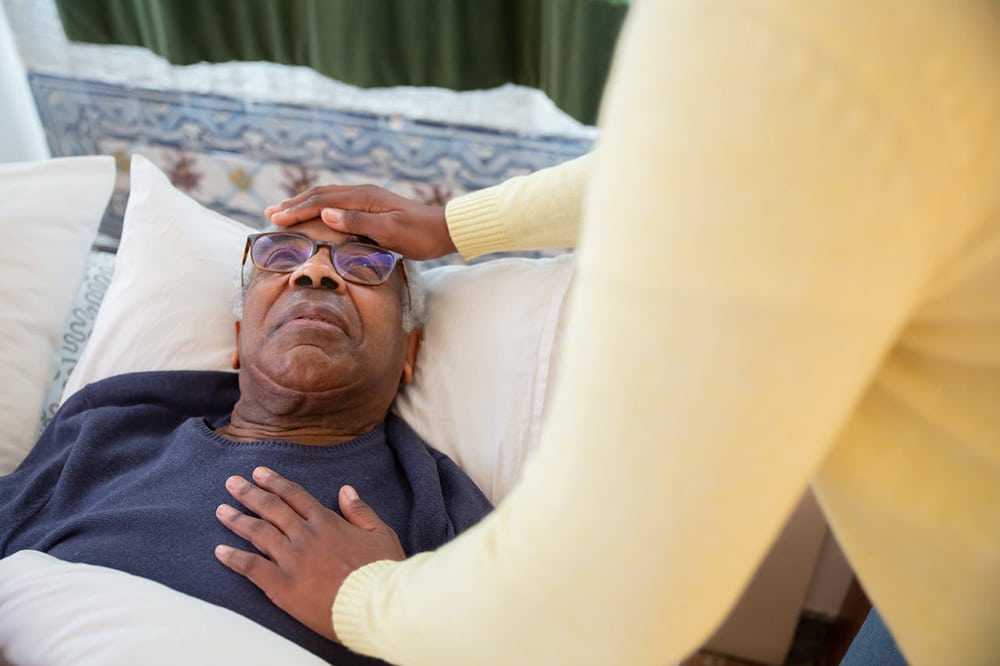How Often Do Infections Lead to Sepsis in Nursing Homes?

Many people worry about contracting an illness or infection. Worries tend to be highest the less control individuals have over others and their environments, such as in assisted living facilities. Recovering from health conditions can prove challenging for some people. This motivates our law firm, Pittman, Roberts & Welsh, PLLC, to address how often infections lead to sepsis in nursing homes and share what you need to know to minimize your susceptibility to it.
What Sepsis Is
Sepsis is a potentially life-threatening medical condition whereby toxic bacteria enters the bloodstream to fight off an infection, yet it instead causes the body to have an inflammatory response. This secondary infection can damage the body’s organs, resulting in their failure, which can, in turn, cause irreversible harm, including disabling injuries and, ultimately, death.
It’s important to note that while sepsis isn’t contagious in itself, underlying infections that can lead to a patient developing sepsis can be.
What To Know About Patient Susceptibility To Developing Sepsis
According to the Centers for Disease Control and Prevention (CDC), 1.7 million or more American adults receive sepsis diagnoses each year. Of those patients, a little more than 20% either die while hospitalized or get transferred to hospice care instead of returning home.
There are various types of infections, including bacterial, viral, and fungal ones, all of which can result in someone going into septic shock. The CDC points out that anyone of virtually any age can develop infections, and that almost all infections are capable of developing into sepsis if a patient doesn’t receive prompt treatment for their primary condition.
An additional study published by the National Library of Medicine in 2014 listed the most common infections that individuals develop that lead to severe (and often deadly) cases of sepsis. Those infections include:
- Pneumonia
- Genitourinary infections
- Abdominal infections
- Skin or soft-tissue infections
- Device-related infections
- Central nervous system infections
- Endocarditis
The above-referenced study shows that the likelihood of sepsis resulting from the different infections above varies depending on a wide variety of factors, including gender, race, whether someone has a pre-existing or chronic medical condition, and age.
As for the latter factor, older adults, a population that arguably accounts for the majority of nursing home residents, have the strongest risk of developing severe cases of sepsis. Of those, this potentially life-altering or fatal medical condition kills at least half of those diagnosed at over 65 years old.
Also, that same research reveals that more than 50% of severe sepsis patients are already suffering from at least one chronic health condition at the time of their sepsis diagnosis. This is also another factor that commonly characterizes the elderly population living in nursing homes. Some of the more common persistent, pre-existing illnesses that those diagnosed with severe sepsis have include:
- Liver or kidney disease
- Diabetes
- Chronic obstructive pulmonary disease
- Cancer
That same study also lists the implantation of medical devices, use of immunosuppressive medications, malnutrition, socio-economic status, and residence in a long-term care facility (like a nursing home) as additional risk factors for the development of the most serious cases of sepsis.
How Serious of an Issue Is Sepsis Among Nursing Home Residents?
Finding recent research regarding the pervasiveness of sepsis among older adults or those living in nursing rooms is challenging. However, there’s a strong likelihood that some of the older studies’ findings still hold true.
For example, one study published by the National Institutes of Health (NIH) in 2013 showed that older adults 65 or over were five times more likely to develop severe sepsis than adults younger than them. In other words, the older population’s risk factor was 6.5% versus 1.3% for their younger counterparts.
That same report, however, chronicled how when it came to nursing home residents, their risk of receiving a diagnosis with a severe form of sepsis was nearly seven times higher than it was for non-nursing home residents. So, while individuals not in assisted living facilities had a 1.9% chance of developing a serious case of sepsis, those residing in nursing homes had a 14% chance.
Causes of Sepsis Infections in Nursing Homes
In combing through various public health advisories, they outline how individuals such as nursing home residents and their caregivers can avoid developing a primary infection that leads to a secondary one, like sepsis:
- Ensuring any open wounds remain covered until fully healed
- Exercising sound hand hygiene, such as when changing wound dressings on residents
- Ensuring residents receive regular medical care for adequate management of their chronic conditions
- Taking caution when inserting, adjusting, or removing catheters
- Wearing personal protective equipment when working with immuno-compromised residents
- Maintaining a clean environment, including using high-grade air filters and sterile surfaces
As you can tell, maintaining adequate hygiene is one critical step to staving off potential sepsis among all populations, but most notably for individuals like nursing home residents who often rely on others for caregiving.
Signs of Sepsis To Look for in Your Loved One in a Nursing Home
The advisories described above spell out how patients and their caregivers must be aware of the signs and symptoms of sepsis and receive immediate treatment at the earliest stages when they believe they’re suffering from this condition to minimize the chances of it worsening.
Some initial signs of sepsis include:
- A sudden decrease in body temperature or the opposite (fever)
- A skin rash
- Shortness of breath
- Low blood pressure that causes dizziness
- Confusion
- A fast heartbeat or the opposite (a weakened pulse)
- Chills
- Clammy or splotchy skin
While our firm’s lawyers aren’t medical professionals, it’s always in your or your loved one’s best interest to see a doctor if you are suffering from any of the symptoms above (or others). You should follow any treatment plan they recommend to avoid a decline in your health.
If you or a close family member developed sepsis in a health care facility or an assisted living facility, seek legal counsel now. Our Jackson nursing home abuse lawyers are standing by to provide you with a free consultation to discuss what happened and what legal remedies Mississippi law affords you in such instances.








